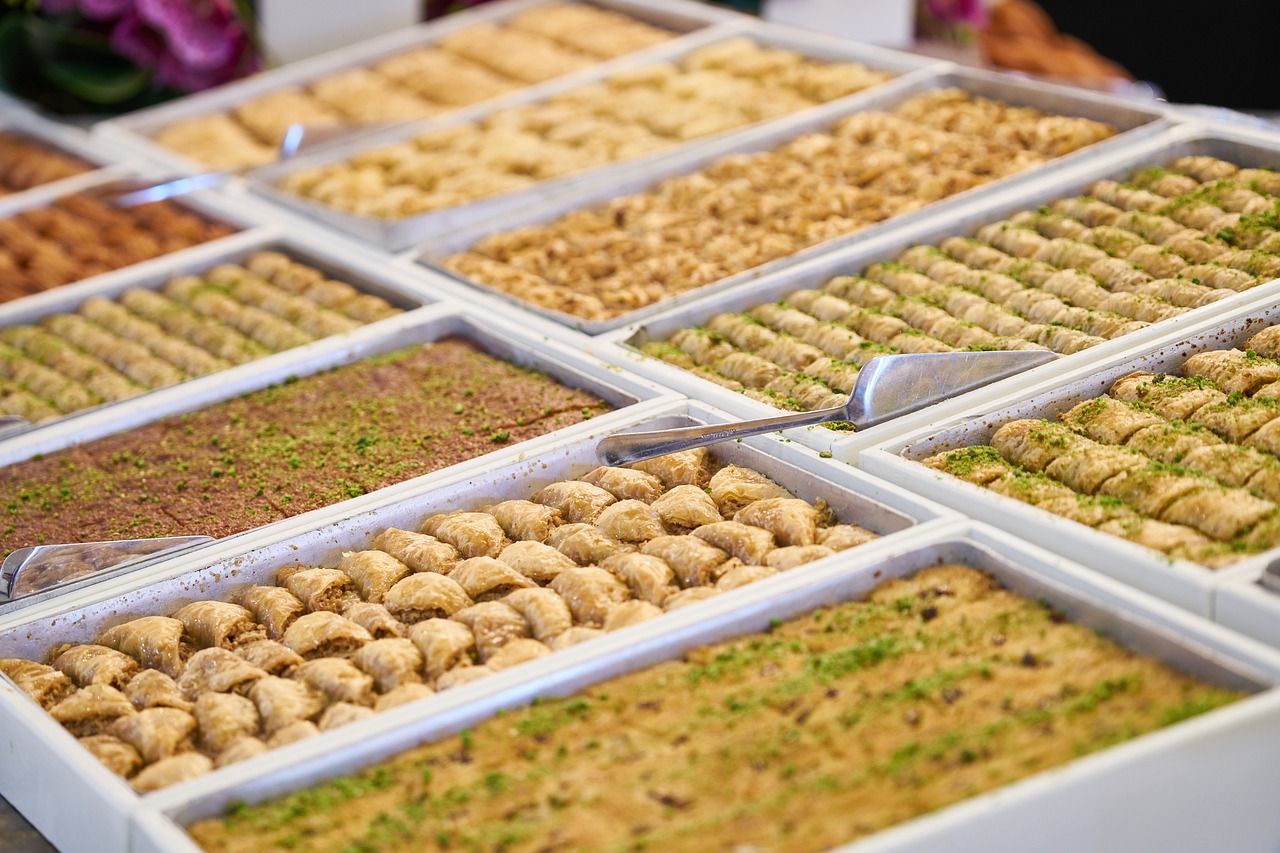So, even if you’ve never met anyone from the Arab speaking world, Turkey, or even the Balkans you probably still know what baklava is.
Like many other things though, even this not so humble dessert has made it into popular culture. It stole the spotlight for a few minutes in the Charlize Theron flick The Old Guard a few years back.
So my assumption is that you’ve at least heard of this tasty treat. If you’re anything like me though, you might be confused by just how many varieties there are out there. If you find a traditional baklava place, the sheer amount of choices lining the glass shelves can be a bit intimidating.
How does everyone else just know what to pick?
You may have a friend who has lived overseas for a while, or someone from an expatriate community. Fear not, even if you’re going on a Baklava hunt on your own, this article is still for you.
In what might be my most ambitious entry yet, I’m going to try and take all the confusion out of Baklava as well as provide some recommendations.
The General Gist of the Dessert
No overly ambitious guide to one of the world’s most eaten desserts would be complete without a short introduction.
Baklava is a dessert that consists of nuts of various kinds, multiple crispy layers of filo pastry, lots of butter, all bathed in a super sweet syrup. Often they’ll have a base which consists of nuts too.
That’s really it! That’s the basic concept, but oh boy have people taken that concept and run wild with it.
Centuries of baking this dessert have given the various peoples around the world ample time to experiment with different ingredients and techniques. There’s enough styles out here to appeal to all types of tastebuds.
From the sweet-tooths with A-grade level dental plans, to the lovers of the simple originals, there’s a baklava for every person out there.
I will be avoiding the obvious controversy of who makes the original or who makes the best baklava variant. Although, with my travels I’ve been trying my best to sample all the Baklava the world has to offer.
My baklava eating experience is currently confined to Istanbul, as well as the one or two Arab bakeries from my hometown of Melbourne. In a short matter of months though, I’ve eaten more baklava in Turkey than my whole life in Melbourne.
I plan to make this post a bit more dynamic and will come back to update from time to time as I accrue more gastronomical experiences.
Different variations of baklava
Walnut, Ceviz
One of the most common ingredients that you will find is the walnut, known in Turkey as ceviz. You will find this humble nut holding everything together at the base of your baklava, or trapped in between layers of filo pastry. Walnut baklava is often one shade of golden brown throughout, and can be quite creamy when combined with the right amounts of butter and sugar syrup. Definitely a classic and one that almost every bakery does.
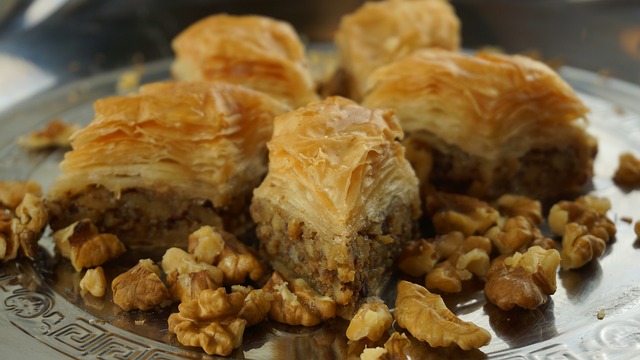
Pistachio, Fıstık
Before I moved to Istanbul I knew pistachio baklava was a thing, but it was only after arriving did I realise how much of a thing it was. Pistachio in desserts is a common sight here, and baklava is no exception. Pistachio desserts have a regional connotation with the Gaziantep region, where they are famous for their pistachios. If you are shopping somewhere with an Antep or Eastern Anatolian theme, expect to find lots of pistachio in your dessert! Pistachio, or fıstık, baklava often stand out from the rest. The base of the dessert is slightly green, and you can find green pistachio dust on top of your baklava too.
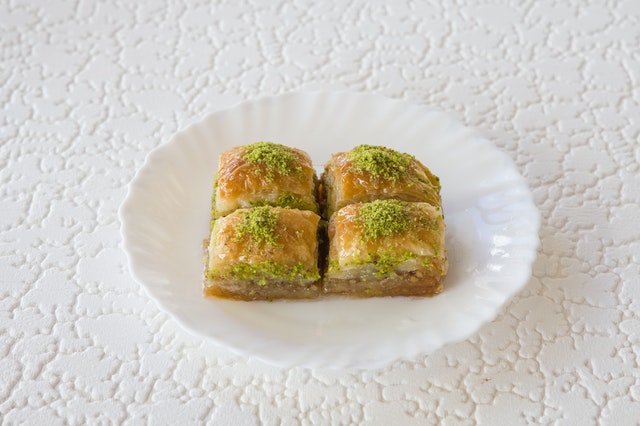
You can’t go wrong with either of these options. I have found the pistachio baklava to be a little sweeter, although I would put this down to individual bakeries rather than nut preference. All nuts are good.
No love for the other nuts?
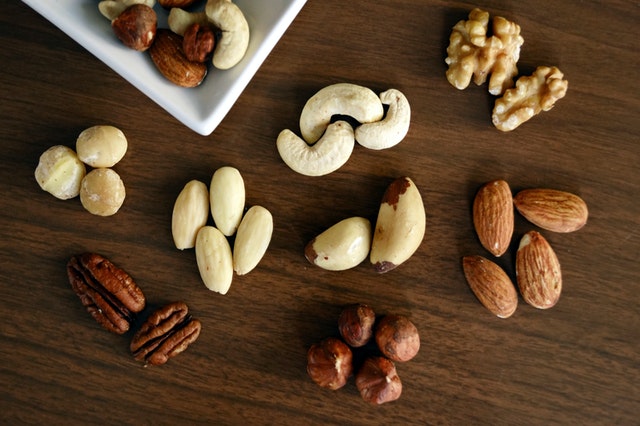
Hazelnut (fındık) is a little less popular and peanuts (yer fıstık) lesser still. However, this doesn’t completely rule them out as possible candidates for baklava varieties. Peanut baklava is a rare one that I found more easily in my home town of Melbourne, rather than Istanbul. In the northeast of Turkey and the Black Sea region, you can find hazelnuts being used in baklava. The characteristic toasty and earthy notes of hazelnut could only do good things for baklava.
Carrot Slice
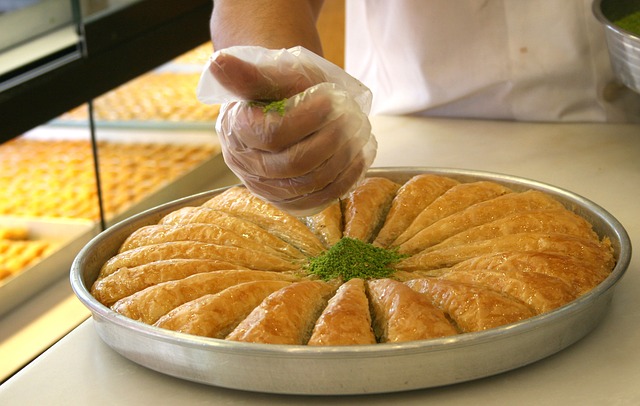
Thank you to Hasan Çilingir from Pixabay
As far as I’m lead to believe, this has nothing to do with actual carrots being added to the mix. However if you look at the triangular cut of this style of baklava, significantly bronzed thanks to the butter, you can easily see a carrot shape. The Carrot Slice is a little larger, good for sharing, and pairs well with traditional Turkish ice cream. It is usually made with less layers of pastry than traditional baklava, and sometimes with less sugar too. The final result is a dessert that is light and crispy, but just as decadent.
Mussels, Midye
The name of this variety comes from its shape and how it resembles a mussel shell; mussels are also iconic snack foods here! A recently new invention, this variation combines a pistachio base, a dollop of kaymak cream or semolina cream in the middle, all surrounded by neatly folded pastry sheets. This is a favourite of mine, as you have very obvious differences in taste and texture all throughout.
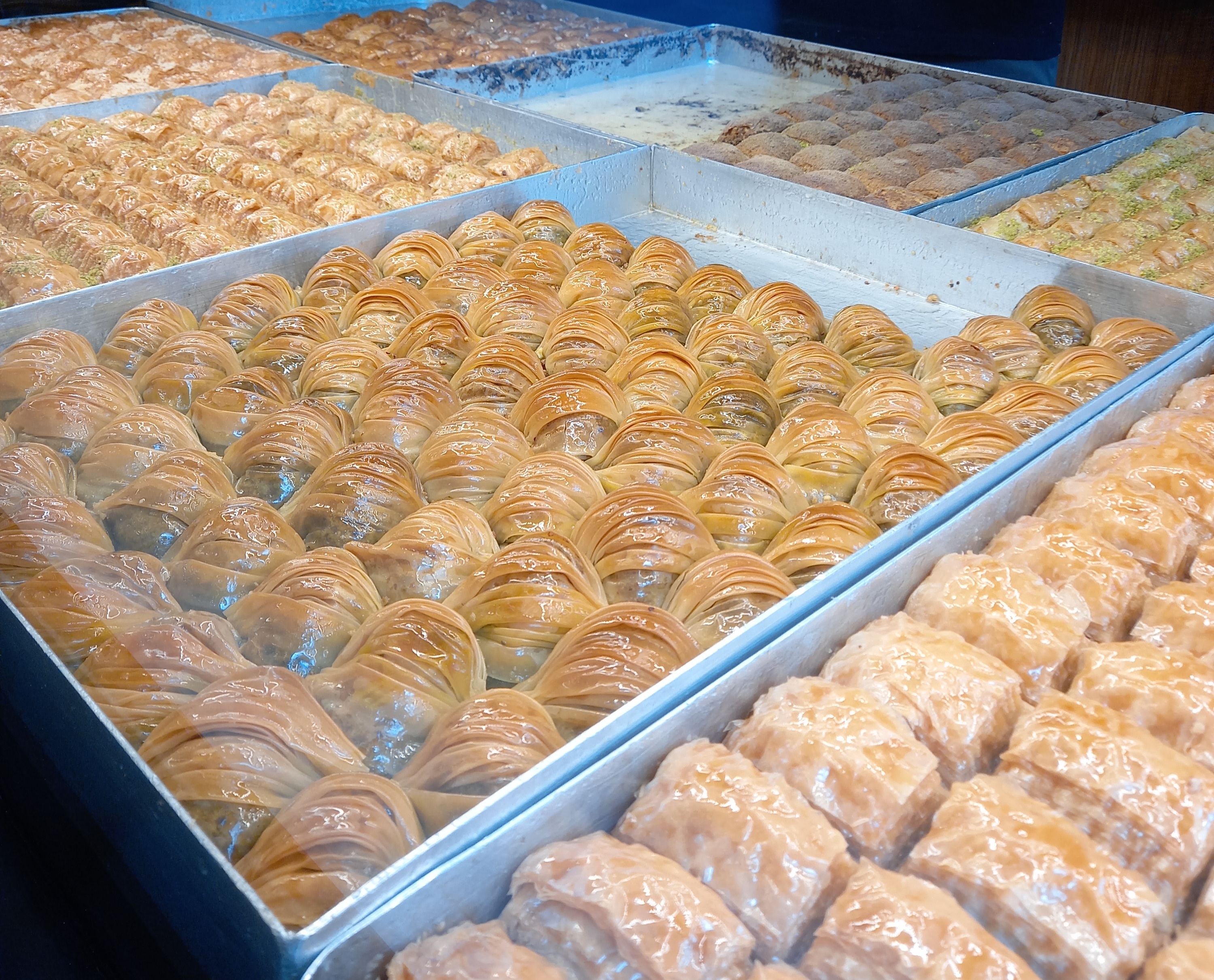
Birds Nests
Birds nest baklava are round and resemble their namesake. This distinct variety used to be my favourite as a child, since I could always identify it from a shop window. Some “nests” can be made from filo pastry, these ones are called Nightingale’s nests.
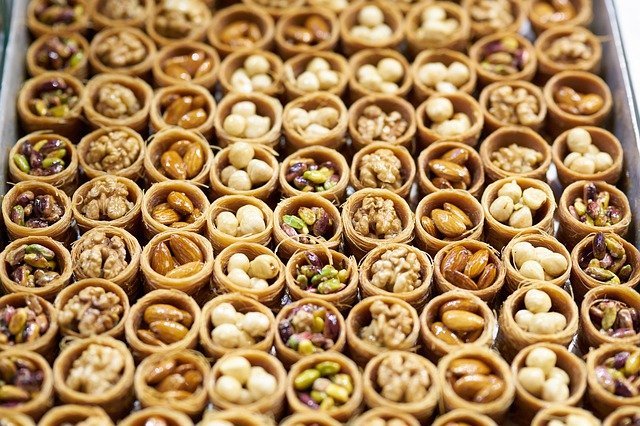
Another variety of “nests” are often made up of the thinner, noodle style kadayıf/kataifi dough which features in other desserts like Künefe and Kadayıf. The thin, straggly kadayıf pastry lends a crunchy texture to this dessert and resembles the sticks a mother bird would use to assemble her nest. All kinds of nuts can be inside this visual and gastric delight.
Kuru baklava, Dried baklava
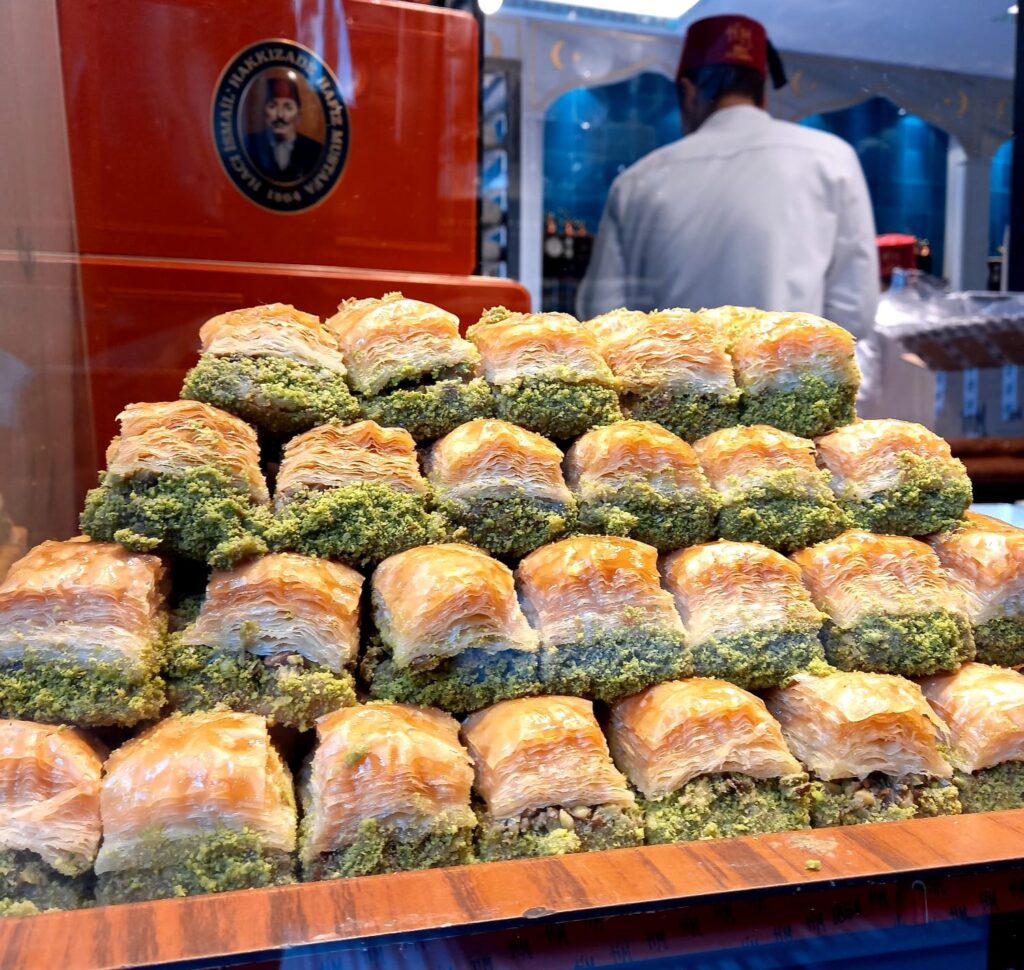
While there are a few dried varieties of baklava, the kuru baklava looks almost like regular baklava. In this case dried baklava doesn’t mean not fresh, as you can buy these in a bakery freshly made next to all the other varieties of baklava. The main difference between dried baklava and the rest is that there is no cream in the dough. So when the baklava is baked, buttered, and doused in syrup the layers of pastry end up becoming dry and crispy. The shelf life of kuru baklava is a lot longer than regular baklava because of the dough. Whether you are packing light or moving to Turkey for the long-term, kuru baklava is a great shipping option for your friends and family. You can find these in the shops often with edges decorated with pistachio powder.
Rolled baklava
There are a few variations of this baklava log or baklava wrap. Some are mostly filo pastry, making it nice and crispy. While others use less filo and have more nuts and filling, which results in a more dense baklava. The way the rolls are made is similar to Nightingale nests, however, the roll is left straight rather than turned inwards to form the nest shape.
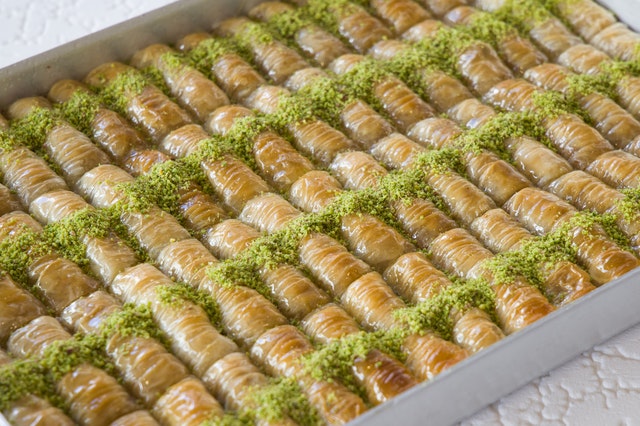
Half-moons
The half-moon is a lovely little baklava variation that gets its name from its curved shape. The pastry folding and cutting processes help lend the half-moon its unique shape. This was another variety that was instantly recognisable for me as a child and soon became a favourite. I’ve mostly seen half-moons with walnuts inside.
Flowers
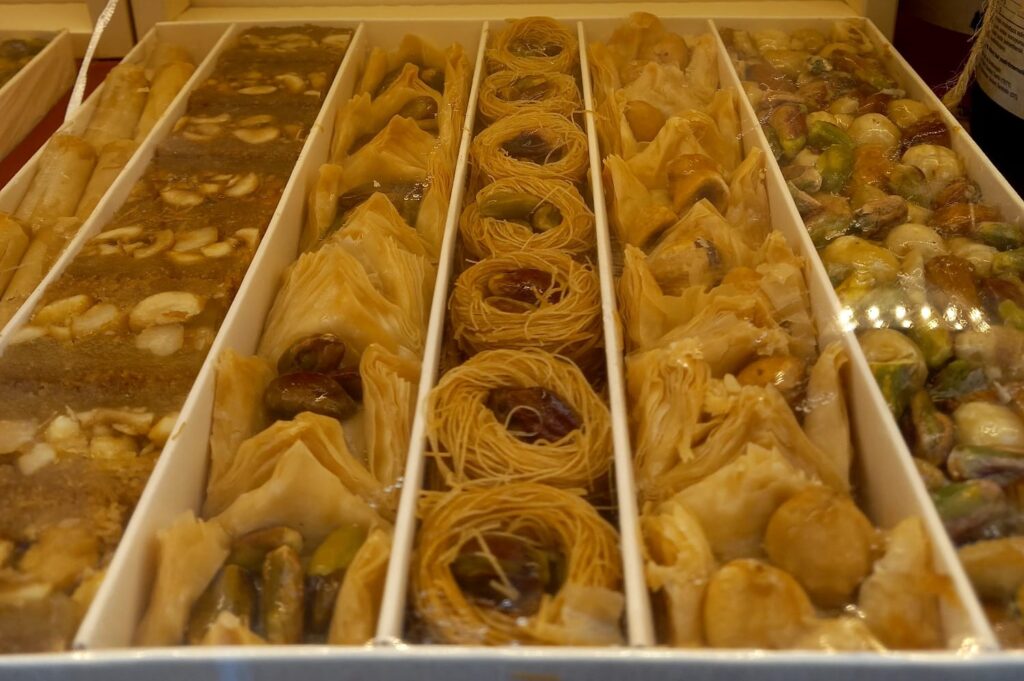
The flower baklava is a unique shape that opens up and shows it’s trove of pistachios or walnuts to the world. This baklava is another light and crispy variety whose filo pastry resembles ornate floral petals.
Sobiyet (Şöbiyet)
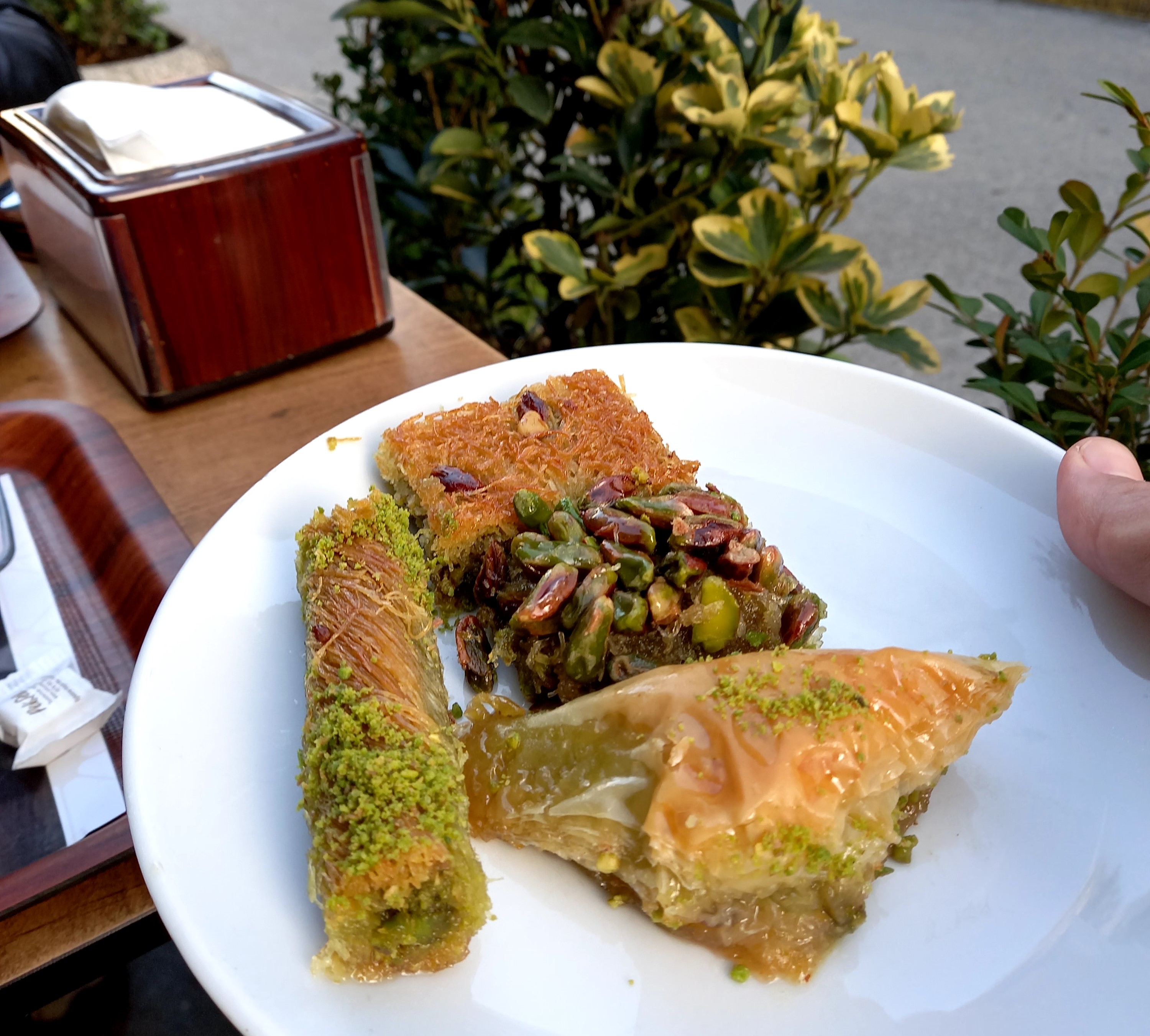
This is a good place to end this section I believe. You might consider Şöbiyet a variation of the humble baklava, or a similar yet distant cousin. It’s not a big issue though, since everything in this blog post is delicious. I have made a completely different section though, for stuff that you might call baklava but goes by a different name. In my opinion Şöbiyet is still close enough to be in the early parts of this blog.
Şöbiyet is another triangular shaped dessert. Although the top layer seems to characteristically fall over the other side, which sort of makes it look like a triangle that’s slouching. It could be that, or all the delicious ingredients inside are trying to ooze out. As is normal, you’ve got the layers of filo pastry and a layer of pistachios; you most likely have some pistachios between layers as well. Importantly, a nice squeeze of cream in the middle elevates this dessert to another softer, gooey-er, decadent level.
Now that you have learnt about the most common types of Baklava that you will find, why not see what new and interesting things people are doing with the dessert? Turkey is a country that loves Baklava! There are so many shops on the streets and none of them seem to be empty. It goes to say that a country like this will have come up with some novelty ways to enjoy Baklava too, right? Follow on for more.
